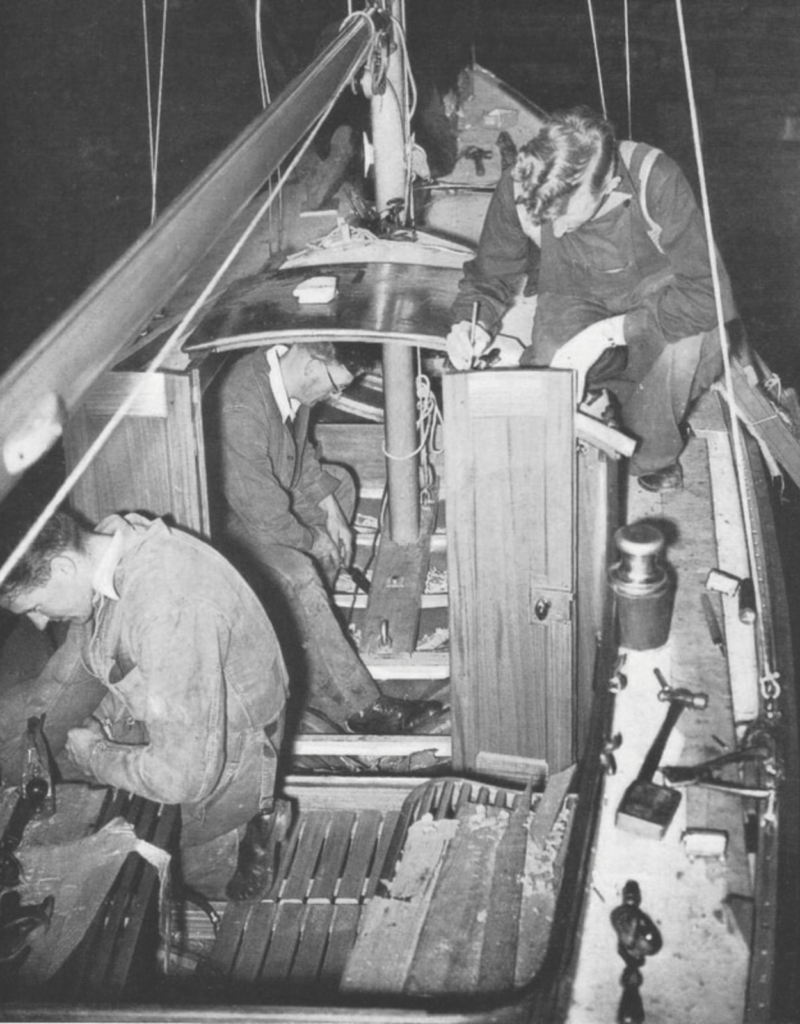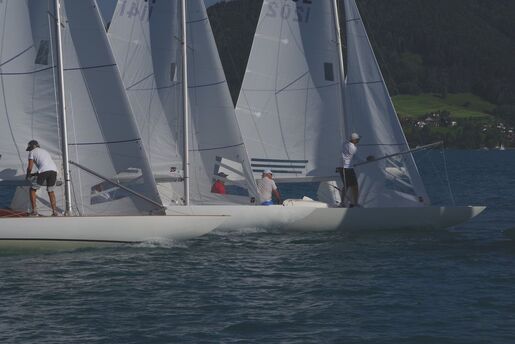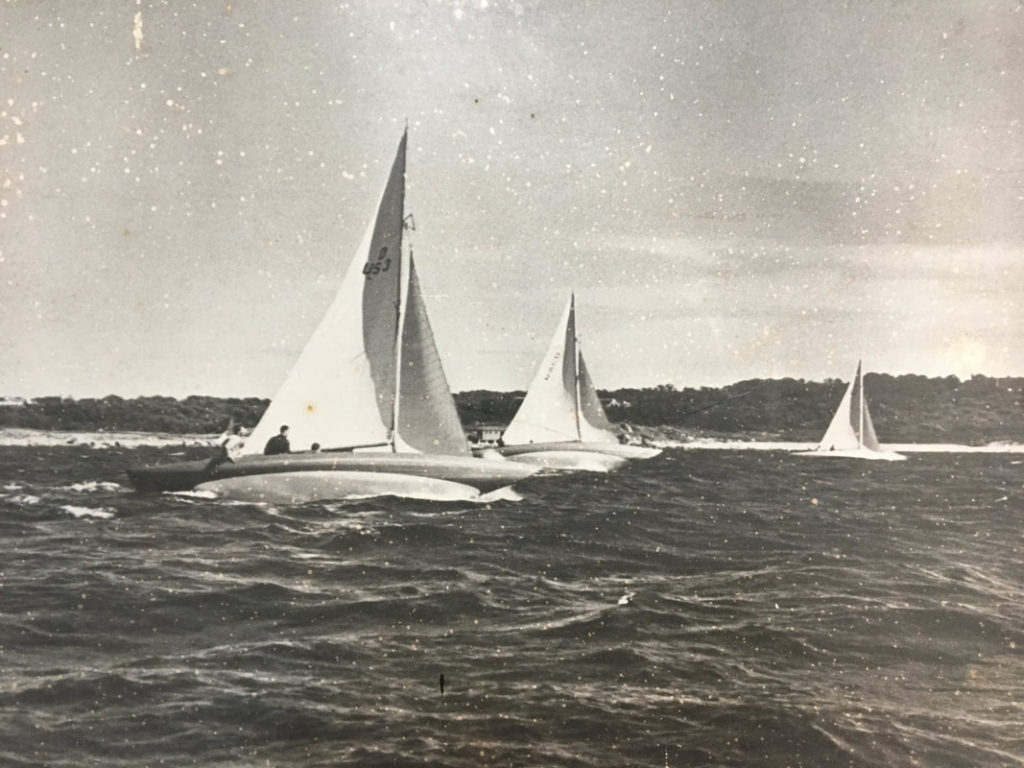

A design competition was launched in 1928 by the Royal Gothenburg Yacht Club (GKSS) in Sweden for an affordable cruising keelboat that was “relatively fast, externally attractive and seaworthy”. Johan Anker, already an eminent yacht designer and winner that year of an Olympic Gold Medal in the 6-meter class, was the winner and his one-design entry, based on the 20 square-meter rule, was approved that year by the Royal Gothenburg Yacht Club, the Royal Danish Yacht Club and the Royal Norwegian Yacht Club. The first Dragon was built in 1929 and they quickly became popular in most nearby countries. International competition began with the donation by the Clyde Yacht Club Conference of the Dragon Gold Cup in 1937.
The Dragon was the Olympic one-design three-person keelboat class from 1948 to 1972, which saw upgrades for racing with the addition of a genoa and spinnaker, with supporting rigging changes. In 1961 the IDA was formed to formally manage the evolution and consistency of the boat. This era ushered in the biggest expansion of the Dragon Class worldwide with individual Dragons or Dragon fleets on almost all continents.
After the Dragon was dropped from the Olympics, there was a lot of discussion about the way forward. Up until this time, Dragons were built of carvel planked wood, but fiberglass was the newest technology and the IDA, working with Børresen in Denmark, developed plans for a fiberglass Dragon that would maintain the competitiveness of the wooden Dragons. Despite this important evolution, the Dragon Class died out or was seriously reduced in numbers in many countries once it was no longer an Olympic Class.
Modern Dragons
After the Olympic period the Dragon subtly altered its profile to become the keel boat of choice for ex Olympic contenders and champions as well as other talented sailors looking for strong competition in a non-Olympic Class. In the mid-eighties the Class started to grow once more with the emergence of a second major builder, Petticrows under the leadership of Poul Ricard Høj- Jensen, alongside Børresens. By the mid 1990s the average number of boats built each year was 25-30 and the major competitions regularly had 80 – 100 boats. Even with today’s significantly expanded race program, most of the major competitions have 80+ boats.
The Dragon Class is active in 30 countries in 5 Continents with over 1300 registered boats, and many more used for day sailing or cruising. The World Championships are held in odd years and the European Championships are held annually. The Gold Cup (held annually in certain specified European countries), is unique in that all six races count without discard.

The crew of three or four makes for a tightly knit unit without the need for hired heavyweights. Class Rules ensure level racing, and the ease of trailing makes international competition attractive to all budgets. Spars and sails are easily adjustable while racing, allowing a skillful crew to optimize the boat for any conditions. Dragon races cannot be won by brute strength. The Dragon’s design philosophy has made it a class where extremely close racing is the norm, and where races are won by the crew’s mastery of the conditions and tactics on the course.
Dragons in North America

The first Canadian Dragon was launched on English Bay in Vancouver in 1951. The fleet in Canada was given a boost by H.R.H. Prince Philip who presented the Canadian Yatching Association with the Duke of Edinburgh Trophy, first won in 1953 by Spence Hanna of the RCYC in Toronto. In 1954 H.R.H. Prince Philip brought his Dragon, Bluebottle (a wedding present from the Island Sailing Club of Cowes) to Canada where it was raced in Montreal, Hamilton and Toronto against local Dragon sailors from Canada and the US. In the US, the first fleets were started in the early 50s in the North East, the South, the Pacific North West and California. Many were Norwegian or UK built.
At the height of it’s popularity as a racing class in the United States, American sailors were among the best in the world, with Lowell North winning a Bronze at the Tokyo Olympics in 1964, and New Orleans native G.S. (Buddy) Friedrichs II winning Gold at the Olympics in Acapulco, Mexico in 1968. In the final Olympic Competition for the Dragon class, in Kiel, Germany in 1972, Don Cohan of Philadelphia took home the Olympic Bronze medal.
The class has active racing fleets in the Great Lakes and the Pacific Northwest. There are individual Dragons racing or day sailing in California, the Midwest, the Northeast, and along the Gulf Coast. For 70 years Dragons have been sailing our shores, and the same qualities of design and performance that attracted people to her then continue to do so now. The same beautiful lines drawn by Johan Anker in 1928 still appeal to our love of beauty, and exciting performance on the water.